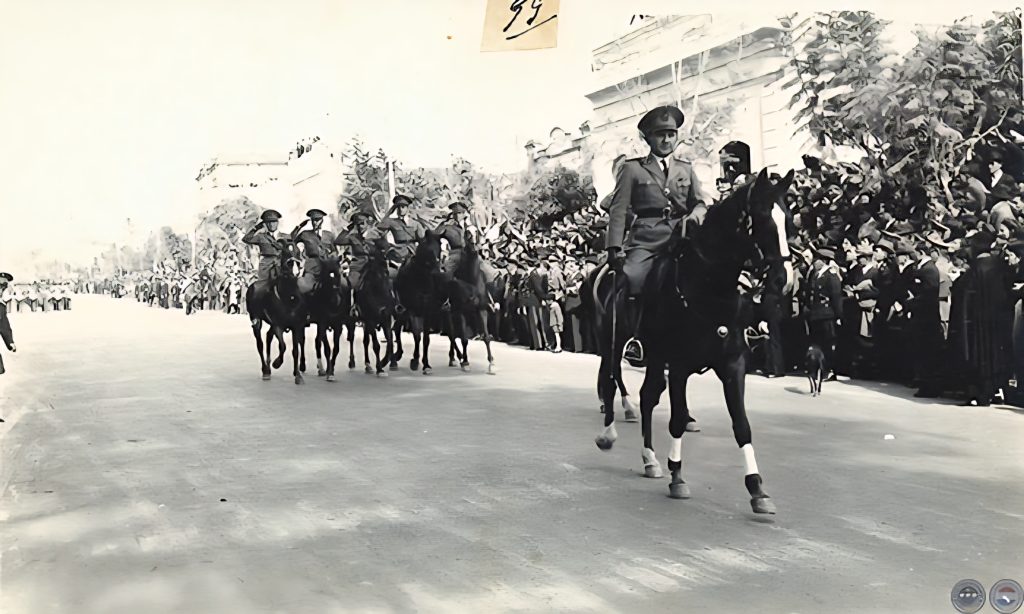Every 12th of June, Paraguay marks the end of the Chaco War, one of South America’s bloodiest conflicts of the twentieth century. Yet, this date represents far more than the mere cessation of hostilities. It marks the beginning of the Chaco shift that has resulted in a strong bilateral relation, now exemplified by a model of diplomatic, commercial, and political cooperation between two nations once locked in a brutal struggle.
Exactly 90 years ago

On June 12 1935, the Peace Protocol signed in Buenos Aires brought an end to three years of fierce fighting between Bolivia and Paraguay over the Chaco Boreal. Although clashes still raged in some areas, the agreement took effect on June 14, when soldiers from both sides embraced in the trenches, a powerful symbol of reconciliation.
Argentine diplomat Carlos Saavedra Lamas, who would later earn the Nobel Peace Prize, played a crucial role in the mediation process. His efforts not only halted the violence but also paved the way for the Treaty of Peace, Friendship, and Boundaries in 1938. Read for more information about the peace treaty: Paz del Chaco: Bringing an end to the bloodiest war in Paraguay’s history.
The Chaco shift: from conflict to understanding
Finalising the border took several more decades, culminating in a definitive agreement in 2007. This landmark development laid the foundation for a resilient and forward-looking relationship, rooted in regional cooperation and shared progress.
Today, Bolivia and Paraguay enjoy a relationship built on sustained collaboration, and a mutual commitment to integration. Both governments, guided by progressive and regionalist ideals, prioritise dialogue, partnership, and shared interests.
Key milestones include the presidential meeting between Luis Arce and Santiago Peña in La Paz and the first Bolivia-Paraguay Binational Cabinet in 2019.
Trade on the rise and opportunities shared
More recently, the Committee for Integration at Cañada Oruro-Infante Rivarola gathered in Villa Montes, Bolivia, to enhance border infrastructure, ease the movement of people and goods, and extend customs operations. These efforts aim to transform a former conflict zone into a thriving region of cooperation and growth.
Economic ties between Bolivia and Paraguay continue to strengthen, reflecting the qualitative leap in their partnership. In 2024 alone, Bolivia exported over US$ 5 million worth of goods to Paraguay, and imported $24 million in return.
While modest on the global scale, trade between the two nations has grown by nearly 30% over six years, thanks in part to the work of the Bolivian-Paraguayan Binational Chamber of Commerce and Industry. And there is much more.
Major areas of collaboration
• Energy and gas: Since 2013, Bolivia has supplied Paraguay with liquefied petroleum gas (LPG), and both countries are now planning to construct a cross-border gas pipeline.
• Fertiliser and cement: These essential products support Paraguay’s agricultural and infrastructure development and form a key part of Bolivian exports.
• Trade in local currencies: Both countries are exploring ways to reduce reliance on the US dollar in bilateral transactions.
• Mutual investment: Bolivian firms have invested around US$ 120 million in Paraguay over the past five years, while Paraguayan companies such as Chortitzer and Cavallaro continue to expand in Bolivia.
Furthermore, Partial Scope Agreement No. 36, within the framework of MERCOSUR, promotes deeper integration by progressively eliminating tariff barriers. MERCOSUR is the South American trade bloc established by the Treaty of Asunción in 1991, and Protocol of Ouro Preto in 1994.
Once rivals, now strategic allies
What truly defines the relationship between Bolivia and Paraguay with the Chaco shift today is not just trade figures or diplomatic accords, but a shared determination to turn a painful history into a future of joint prosperity. Their commitment to resolving disputes through dialogue, enhancing border connectivity, and developing shared strategies for innovation and economic growth demonstrates a partnership built on trust.
The Peace of the Chaco represented more than the end of a war: it marked the beginning of a meaningful, long-term alliance. Today, Bolivia and Paraguay stand as strategic allies in the heart of South America, showing the world that understanding and cooperation can triumph, even over the most entrenched divisions.



One Comment